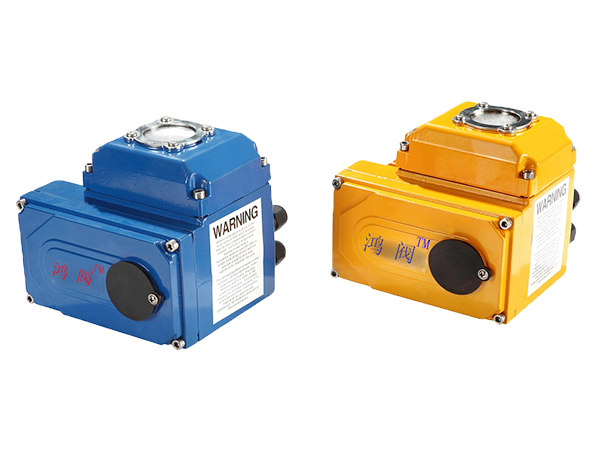
Product
Categories
 Service Hotline
+86769-22990086
Service Hotline
+86769-22990086

The main advantages of the electric actuator are the high stability and the constant thrust that the user can apply. The maximum actuator can generate up to 225,000 kgf of thrust. Only the hydraulic actuator can achieve such a large thrust, but the hydraulic actuator is more expensive than the electric actuator. A lot higher.
The anti-deviation ability of the electric actuator is very good. The thrust or torque of the output is basically constant, which can overcome the imbalance force of the medium and achieve accurate control of the process parameters. Therefore, the control accuracy is better than that of the pneumatic actuator. high. If a servo amplifier is used, it is easy to achieve the exchange of positive and negative effects, and it is also easy to set the state of the off-signal valve position (hold/full-open/full-off), and when it is faulty, it must stay in place, this is Pneumatic actuators do not, pneumatic actuators must be secured by means of a combined protection system.
There are two types of electric actuators, which are generally divided into a Part-Turn Electric Valve Actuator and a Multi-Turn Electric Valve Actuator. The former mainly controls valves that require partial rotation, for example: Ball valves, butterfly valves, etc., the latter requires multiple turns of the valve, such as gate valves.
Electric-powered multi-turn actuators are one of the most common and reliable actuator types. Use a single-phase or three-phase motor to drive the gear or worm gear and finally drive the stem nut. The stem nut moves the stem to open or close the valve. Multi-turn electric actuators can quickly drive large size valves. In order to protect the valve from damage, the limit switch installed at the end of the valve stroke will cut off the motor power. At the same time, when the safety torque is exceeded, the torque sensor will also cut off the motor power. The position switch is used to indicate the valve's switching state. The handwheel mechanism that mounts the clutch device can manually operate the valve in the event of a power failure.
The main advantage of this type of actuator is that all components are housed in a single housing that integrates all basic and advanced functions in this waterproof, dust-proof, explosion-proof enclosure. The main disadvantage is that when the power fails, the valve can only remain in place, and only with the backup power system, the valve can achieve a fail-safe position (fault open or fault closed).
This type of actuator is similar to an electric multi-turn actuator. The main difference is that the final output of the actuator is a 1/4 turn 90 degree motion. The new generation of electric single-turn actuators combines the complex functions of most multi-turn actuators, such as parameter setting and diagnostics using a non-entry user-friendly operator interface. The single-turn actuators are compact and can be mounted on small-sized valves, typically with output torques up to 800 kg. In addition, the required power supply is small and they can be fitted with batteries for fail-safe operation.
MD series electric actuator adopts AC servo motor as the driving device of the position servo. The position controller PM-2 control board of the matched position accepts the 4~20mA DC control signal of the adjustment system and the position feedback of the position transmitter. Comparing, the compared signal deviation is amplified to make the power level conduct, and the output of the motor rotationally driven actuator moves in the direction of reducing the deviation (the position transmitter continuously converts the actual position of the output into an electrical signal). The feedback signal is sent to the position locator) until the deviation signal is less than the set value. At this point, the output of the actuator is stabilized at the position corresponding to the input signal.